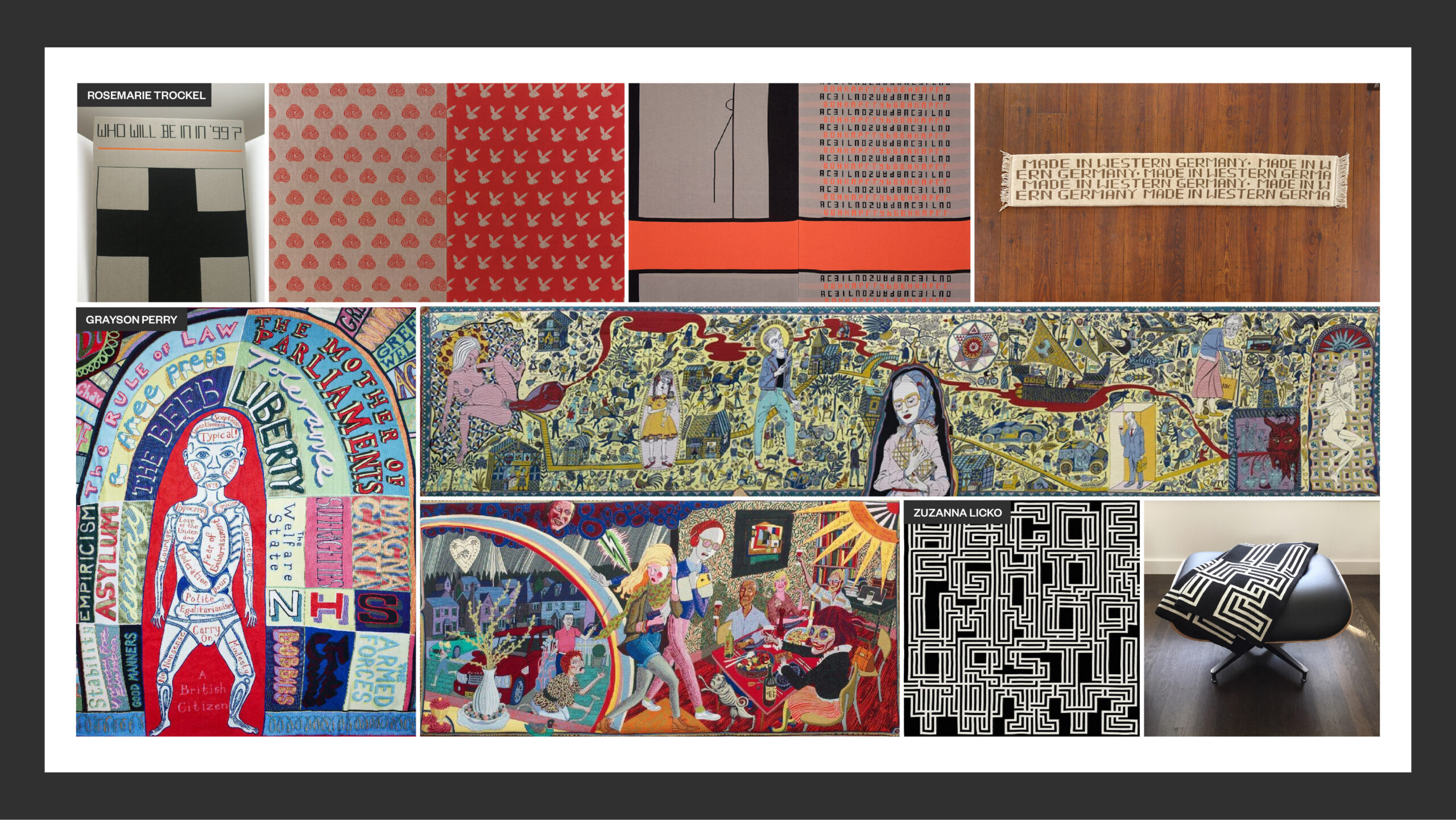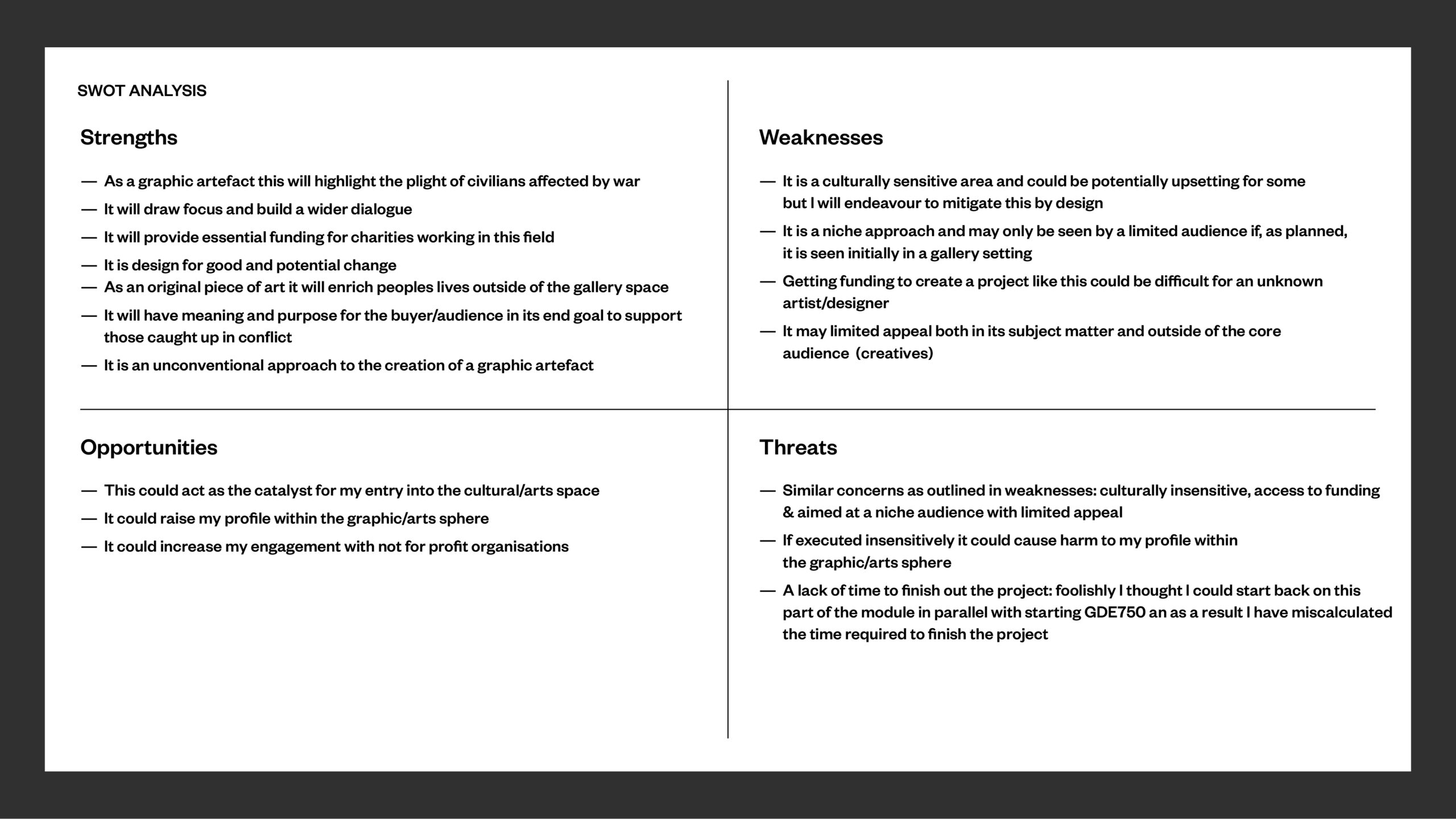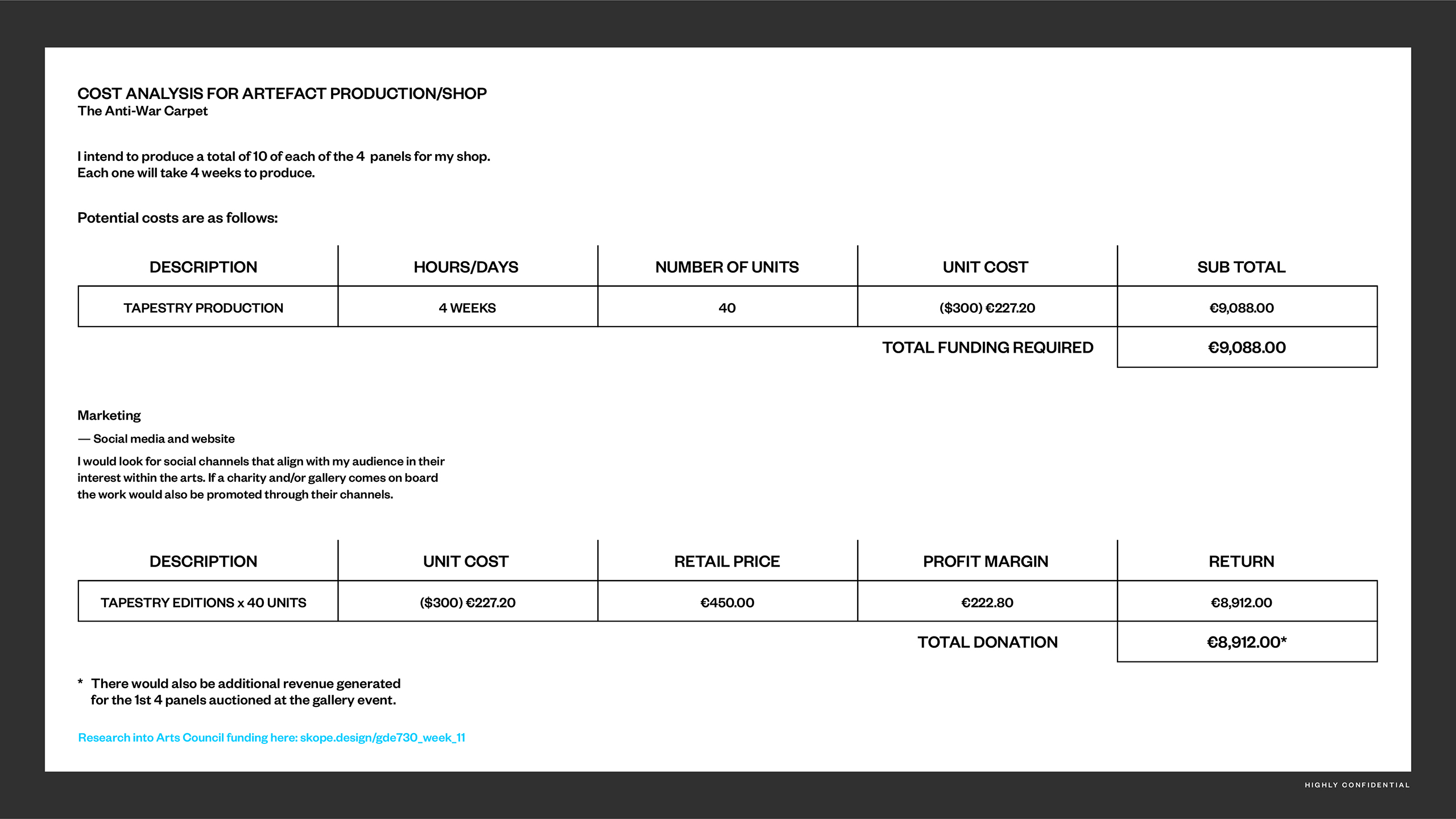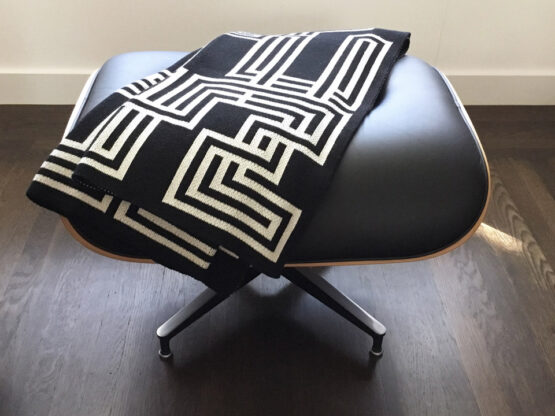Market Research: Revealing Gaps, Targets and Audiences for a New Product or Service Idea.
LECTURE NOTES
Dan Parry (Digital Strategist/Metier Digital)
Understanding Your Audience:
— Who are they?
— What are they trying to do? What are they trying to achieve/solve?
— Why are they doing this?
— What problems do they have?
— What do your first 100 customers look like?
— Where are they?
— What are their psychological behaviours and patterns?
— Are they likely to adopt your service or product?
— Is there a key buying persona or action persona?
— Are the purchasers different to the person using your product? Who buys it and who will use it?
Business Assumptions
— What assumptions are you making about your business, audience, product and your ability to achieve this?
— What are the potential obstacles?
— What questions are you asking and are they the right ones? Don't use leading questions.
Qualitative Research: Human centric approach asking questions face to face.
Quantitive Research: Large surveys (100+ participants) to identify gaps or patterns with data. (Typeform/Survey Monkey)
Logic Jump: Questions that refines the answer with further questions.
Questionnaires
— What problems are you having in this area?
— Tell me about your day.
— Why are you having these specific problems?
— What other products do you use that are similar in this market?
The team should be made up of 2 people: One asking the questions and you taking notes and stepping back.
Attendees
— Who do you talk to and are they the right audience?
— Create feedback loops for future improvements.
— Speak to as many people as possible.
Competitive Landscape
— Who is currently in this space?
— How are they solving the problem?
— Can you find a unique way of solving the problem yourself to build something of value?
SWOT Analysis
Strengths
— What advantages does your product/service have over other the competition?
— What does your product/service do better than anyone else?
— What do people in your audience or market see as your products strengths?
— How is your product/service different to anyone else?
Weaknesses
— What could you improve on?
— What should you be avoiding?
— What are people in the market likely to see as a weakness?
Opportunities
— What are the opportunities in this space?
— What interesting trends are you aware of that perhaps others aren't?
— Are their social patterns or lifestyle changes in the population that you have noticed that perhaps others haven't?
— Is there anything in your local area that's happening?
Threats
— What obstacles are you facing?
— What are your other competitors doing?
— Is changing technology challenging your position?
— Negative outcomes help you to iterate, improve and scale effectively.
Social Media
— What are people saying about your competitors?
— Join groups/channels to build an audience and add value by posting interesting stories that matter, tips or to entertain.
— Find the hash tags your competitors are using and look for the one that have less followers to grow your audience.
— Where are your audience?
— What groups or channels are they currently using?
— How can you bring them into your community to give service and value before you launch?
— What are their preferred social platforms?
— Do they prefer face to face?
— Build up an email list for talking to people who care about what you are trying to do.
— Bring them into your channels.
Review Sites (Trustpilot, Yelp etc…)
— See what people love or hate about your competitors products or services.
— Find patterns: What are they doing well or badly?
Language
— Use the right language for your product or service.
—
Workshop Challenge
Research and analyse the constructs of market research, and identify need and an audience for a new product or service idea.
Post learnings from previous modules on market research, trends and Dan Parry's lecture I have come to the conclusion that my artefact will not align with traditional marketing constructs such as qualitative and quantitive research. As I have decided, contrary to weeks 9 and 10, that the positioning of my artefact will be within a gallery setting first,and due to the nature of the artefact itself, I have selected only the areas that I feel are relevant to my process.
Audience
As I am essentially proposing to create an artistic statement against war my audience would be quite broad. The artefact could eventually be sold via various channels: Online shops/gallery sites or within small galleries themselves as a response to my goal to bring my practice into the cultural/arts space. The artefact would be an emotive piece and purchase would be niche and limited to those that are either interested in the visual interpretation, subject matter or cause. I think in this instance the saleable artefact would need to be of a limited edition of say 100 of each. I would start this project within an Irish context and for an Irish audience initially and if marketed properly it could potentially reach a wider audience. The artefact will be an artistic/design piece and as such I see this as my core audience. Perhaps the best way for me to get this visible is to do a touring exhibition to build a wider audience for the work. I think potentially the purchase could be both gifted and bought personally.
Assumptions
Because of the difficult subject matter I think point to purchase could be a potential barrier. Also as an unknown designer/artist the audience may not see value in the maker or the associated purchase costs. In other words I am not really making any assumptions yet without the design of the arefact worked out. It has to marry artistic statement with desirability.
Competitive Landscape
I have researched three artists currently working in a similar space which could influence and add meaning to how my artefact will potentially take shape.
Rosemarie Trockel
Rosmarie Trockel is a German conceptual artist who deals directly with feminist objections to social and cultural categorisations of how women are treated within the art world and the wider world in general. Rosemarie is not afraid to verbalise these objections both through her work and when critiquing other artists creations.1 This draws some tenuous comparison to the work I intend to make given that I am also undertaking subject and visual matter that could be deemed uncomfortable for some and controversial for others.
It was in 1985 when she first started to experiment with industrial knitting machines.1 The examples collated here are all untitled pieces.2 In my own process the works will be simulated and speculative with the later intention to make the works real.
Through a rigorous interrogatory practice Rosemarie's knitted pictures (Strickbilder) 'eviscerate artistic hierarchies, genre categorisations and associated gender classifications'.2
Reflecting on her own process Rosemarie states “In the 70s there were a lot of questionable women’s exhibitions, mostly on the theme of house and home. I tried to take wool, which was viewed as a woman’s material, out of this context and to rework it in a neutral process of production.”2 For my own artefact I intend to interrogate the language of civilians and repurpose it within my textile designs giving amplified voices to the disenfranchised victims of war.
In her work 'Untitled' knitted wool, in two parts 1985-1988, an edition of three, 'the Woolmark alludes to an image of female domesticity, while the Playboy bunny characterizes the sexualised female stereotypes and the objectification of women'2 and draws attention to clichéd gendered signifiers.2 'Who will be in in '99?' reads as a feminist comment on the male dominance in art history. The title refers to artist rankings while the cruciform shape is a direct representation Kasimir Malevich's Suprematist modernist paintings.3 I am particularly interested in the juxtapositions in Rosemarie's work and their subverted meaning and would like to explore something similar in the work I propose to produce.
1) https://magazine.artland.com/the-fibers-and-fabrics-of-textile-art-how-classic-craft-found-its-way-into-fine-art-practices/
2) https://www.sothebys.com/en/auctions/ecatalogue/2014/contemporary-art-evening-sale-n09141/lot.4.html
3) https://sammlung.staedelmuseum.de/en/work/who-will-be-in-in-99
…
Grayson Perry
Grayson Perry is a British born ceramicist, textile artist and film maker who uses the power of the unconscious to unpack conflicts in society, identity, meaning, life, lifestyle, tastes and codes.1 Grayson's work is multi-layered and often juxtaposes the beauty of the physical artefacts with deeper darker hidden meaning or social, political, environmental and cultural issues.
In the 1990's Grayson started working with embroidery (1) and textiles have since become art of his creative vocabulary.2 This symbiosis of the seemingly 'pretty' combined with subversive hidden coded meaning has become a trademark of his approach in all of his artworks. For instance, in his work 'Mother of All Battles' (1996), a woman’s folk costume is stitched with ethnic symbols and images of weapons and killings.2 It is this juxtaposition that draws me to his work in producing my own artefact. He sources and researches imagery that is seemingly benign but has some cultural significance attached to it and subverts its meaning and purpose. He is also not afraid to appropriate cultural symbolism or historical references when creating the work which aligns perfectly with my own approach.
Channel 4 has commissioned Grayson to make many documentaries exploring both his ethnographic thought processes in the unpacking of discovery of life and society both at home and globally.2 The documentary 'All in the Best Possible Taste' (2012), which was an exploration of class and taste in England, resulted in a series of six large tapestries named 'Vanity of Small Differences (2012)'.2 For The Walthamstow Tapestry (2009), a textile work that scrolled 49 feet (15 metres) across a gallery wall, Perry arranged a series of detailed images—decoratively inspired by traditional Sumatran batiks but replete with references to contemporary consumer culture—into a sweeping narrative of a human life.2 The alignment of beauty and subverted meaning is also an area I would like to explore to see if there is a fit for my own artefact.
1) Grayson Perry_press_release_VM2023 (Victoria Miro Gallery/London 2023).
2) https://www.britannica.com/biography/Grayson-Perry
…
Zuzanna Licko
Zuzanna Licko, Graphic Designer and Font Designer, is best known for her typographic work with Rudy Vanderlans with the publication of their studio magazine Emigre (1984) and subsequent type foundry. Emigre embraced the technical possibilities afforded by desktop publishing.1 This combined with an avant-garde approach to typography has influenced numerous creatives over the years and the type foundry continues to this day affording designers both the experimental and conventional.1 Her experimental approach appeals in the making of my artefact which will cause the audience to look deeper into the work to find meaning and deeper understanding.
Recently the Emigre type foundry and Zuzanna in particular has turned her attention to creating ceramics and textiles which she sees as an extention of her type design.2 Her textile designs start life as deigns for fonts which are then interwoven into her textiles.2 In the example shown here 'Alphabet Blanket Throw' what seemingly appears as an interconnected grid pattern reveals itself as an actual alphabet. Once again it is this juxtaposition of elements that intrigues me in that it is both visible and invisible at the same time. She views these purchasable artefacts as a reaction to digital consumerism.2
1) https://www.emigre.com/Designer/ZuzanaLicko
2) https://en.wikipedia.org/wiki/Zuzana_Licko

SWOT Analysis
I have carried out a SWOT analysis using Dan Parry's set of questions that you should be asking in relation to the specifics of this artefact.

Stakeholders
— Gallery owners (potentially supporting the artefact and its meaning and purpose through providing funding and exhibition space)
— Charities in this field who wish to align themselves with such a project
— Dublin City Council for fundraising
— Artists. Perhaps there is an opportunity to work alongside a respected artist in a similar field to increase the profile of the work.
— Influencers to promote the work on socials.
— Makers: Where will I get this made? What are the associated costs? Having no experience in textiles I will need to outsource the production to a third party. This will be covered in a cost analysis.
The Arts Council in Ireland provide funding for the arts through bursaries and grant schemes are also available. According to the Arts Council England, grants funding is a highly competitive field with only 30% of applications out of 85% being successful. Grants provide funding for projects that are unable to provide income in any other way. If you are successful in being awarded a grant it can only be used for the purpose applied for. They are useful for producing a new work, developing new skills and undertaking research and development. Howvere fundrs will only award grants according to their priorities. Grants if awarded may also be subject to tax liability.1
Grant funding comes from two main sources: public funders (such as local councils or Arts Council England) and private funders (charities, trusts and foundations). Public funders include: government departments, local authorities and ‘Quangos’ (quasi-autonomous non-governmental organisations – organisations). Quangos receive money from the Government to carry out funding on their behalf. The Arts Council England is one example of this.1
If you receive a grant then you are usually required to abide by standard terms and conditions. These might include: displaying the funder’s logo, paying people involved a fee set at a professional level and/or providing accounts that show how you are using funds. Your grant may be released in instalments, not all at one time. You need to plan how you will manage your project alongside the funder’s release of money.1
Private funders include Trusts and foundations. A foundation has income from an endowment of land or investments, whereas a trust is just another word for a charity. Many grant-giving bodies are both a foundation and a trust. There are over 8,000 trusts and foundations registered in the UK. You should always research potential funders carefully. Find grant opportunities that you are eligible for and that support activity you want to do. Funder's may state they can’t cover all costs, but will still want to know where you intend to get the rest of the money. You are unlikely to get funding for a project that is only partially funded if you have no clear, likely plans for how you will cover the shortfall.1
Guidestar and Funder finder are good places to find trusts and charities.
1) https://artquest.org.uk/how-to-articles/grant-funding-for-artists/
As I am an unknown creative in the arts space I could also explore the avenue of cafe owners or pubs that display and sell art. After a cost analysis I would create the work with all profit going to specific chosen charities. The only downside to this is that it may not generate the expected revenue for the art to actually have a significant financial return for the charities.
...
Marketing
— Press releases
— Traditional advertising in creative publications and newspapers
— Social media and website
Following on from Dan Parry's lecture I would look for social channels that align with my audience in their interest within the arts. If a charity comes on board the work would also be promoted through their channels.
...
Cost Analysis
I intend to produce a total of four panels for my artefact. Each one will take half a day to produce.
Potential costs as part of my cost analysis are as follows:
2 days electricity:
Approx 43c per kWh x 15 hours = €6.45 + 13% VAT (84c) = €7.30.
Time:
4x panels @ .5 days = €900 (costed at my daily rate of €450 per day).
Materials:
Outsourced textile production: 4x panels 20"x 60" @ $300 each (€277.20) = €908.80
After spending some time researching suppliers I found a company in the USA that can produce actual tapestry wall hangings with a 4 week lead time and no additional delivery fees.
1) https://www.qualitytapestries.com/products/custom-wall-tapestry
A4 Paper: for laser printing press releases €5.40.
Postage stamps: 10 first class letters @ €1.40 per envelope = €14.00.
Printer Ink: €36.99 Canon Pixma.
Travel to from meetings: €15 euro per journey x2 = €30 x x 8 journeys = €240.00
Promotion:
Ad in Totally Dublin cost = approx €500. Irish Arts Review 1/8 page ad (100 x 62mm) = €500.00. Total €1,000.00.
Website: Hosting (Namecheap) €4.61 pcm x 2 months = €9.22 Domain (.com) €5.53 per year. Email €3.70 pcm per email x 2months = €7.40. Shop (Shopify) €39 pcm. x 2 months = €100.15. Total = €122.30.
Gallery Space: Studio F at D-Light Studios = €799 pd x 10 days = €7,990.00.
Approximated Total = €11,224.79.
...

...
Imagine and develop a clear business outline of your intended audience outlets for distribution or purchase
Auction
Initially the artefact will be auctioned off as an original piece of artwork within the confines of the gallery space. Sponsors would be invited through both the gallery itself and through the charities that come on board. This would take the form of a private viewing, presentation and auction at the end.
Shop
Post exhibition the 'Editions' will be made available through our online shop and website as well as being marketed through social media channels.
The charity and gallery could also direct traffic to the point of purchase.

